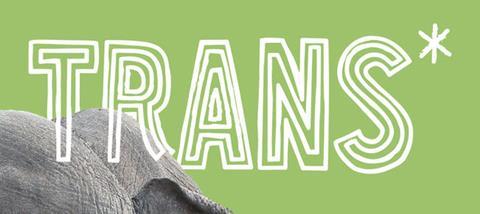
I knew from an early age that I wasn’t a tom boy, I was a boy.” So says Leo, in BBC3’s recent documentary, Leo: becoming a trans man Leo was born a girl, called Lily, but since the age of 5, he has been living as a boy. At 15, he started hormone blocker treatment, the first medical step on the way to transitioning physically. “Because my brain is male,” he says, “I want my body to match.”
In 2009-10, 97 children and young people were referred to the gender identity development service at the Tavistock Clinic in London. For the year 2016-17, the number is 2,016. The Tavistock Clinic is the only one in England to work with under-18s (the Sandyford Clinic in Glasgow serves Scotland). It works with children and young people experiencing gender dysphoria, the clinical term used for people who are uncomfortable or feel a disconnect with the gender that they were assigned at birth. (The phrase ‘assigned at birth’ refers to the gender indicated at birth by genitalia and emphasised by societal structures in early life.)
Obviously, as with everything in this issue of the magazine, there is a wide spectrum of views when it comes to this area. Some will approach any kind of transition with theological trepidation, while others are open to treatment aimed at combatting gender dysphoria. These views will be unpacked in the dialogue which follows, but here we’ll be looking at the daily reality of those who suffer and the implications for our ministries.
Not everyone who is referred to a clinic will go as far as Leo and undergo hormone treatment (and ultimately surgery through an adult gender identity clinic) to transition to their preferred gender. Indeed, the range of different gender identifications is such that many use the term ‘trans*’ as an umbrella term to refer to the diverse identities within the gender-identity spectrum. These include those who identify as trans men and trans women, non-binary, gender-fluid, genderless and transsexual, among others. (Using an asterisk after a prefix in Google searches indicates that you want Google to search for any word which starts with that prefix , hence the use here)
This breadth of identities is reflected in the cases that get referred to the Tavistock Clinic. And the increase in referrals and the comparatively short time that research has been in progress means that the gender identity development service has to work with a great deal of uncertainty. On their website, they state: “Just like everyone else in society we are going through a process of trying to understand what is happening and work out how best to help. What is clear is that with the diversity of presentations and the ever-changing picture, we simply cannot have a ‘one size fits all approach’ to working with young people with gender dysphoria.” In the Channel documentary, Kids on the edge, experts in the service outline their struggle with this: “It’s difficult because people come looking for certainty, and we don’t have certainty.”
EXPERTISE
If the experts are working in a state of uncertainty, it’s unsurprising if youth and children’s workers find things more than a little bewildering. In order to start understanding the issues that affect the trans* community, it’s best to find out some of the basics, and the language used is a good place to start. Jeff Killerman, an American activist, educator and artist, has put together a long list of terms and definitions on his website itspronouncedmetrosexual.com. The Gender Identity Development Service (GIDS) website (gids.nhs.uk) also has a useful glossary.
Childhood and adolescence are times when children and young people are discovering who they are. They will try out many different ways of being and identifying, influenced by their family life, upbringing or other societal factors, as well as physical ones, such as hormones or their genetic make-up. Our role, as children’s, youth and family workers is to help those in our care navigate their way through these times. And some of these ways of being and identifying might fall outside our own experience.
It’s essential to put the child or young person at the centre of every decision we make
A WHOLE NEW WORLD
As highlighted earlier, not every child or young person who experiences gender dysphoria will be like Leo and want to transition completely from the gender they were assigned at birth to their preferred gender. Some will want to socially transition - that is dress and behave as their self-identified gender, using the pronouns associated with their preferred gender. They might socially transition in one area of their life, but not in others. Coming out to friends or family can be the first step in social transition. Stepping out for the first time as their preferred gender can be scary: will people accept the real them? Can they cope with people seeing this side of their identity? What will people say to their parents? Social transition can be a step towards physical transition, but for some, this will be enough.
Others might come to the conclusion that they are gender-fluid - they are a mix of the two traditional genders, feeling more male one day and more female another. Still others might settle on being non-binary - identifying as neither male nor female. There will be those who are intersex - that is they have some combination of male and female genitalia or have atypical chromosomes, such as Klinefelter syndrome, a set of symptoms that arise from two or more X chromosomes in males. Others who experience gender dysphoria will choose to continue to identify with their assigned gender for a variety of reasons.
As for any children or young people who are different from the societal norm, those who identify as different from the gender they were assigned at birth or as transgender can suffer from bullying, abuse and rejection. This leaves children and young people bewildered, isolated and at risk of further harm.
What can further compound the struggles of children and young people wrestling with their gender identity is that the understanding of trans* issues is limited, and in some cultures taboo. Media portrayal of people struggling with gender dysphoria can be sensationalist and the reaction of many, particularly in churches, can be dismissive. Those who express gender dysphoria run the risk of not being taken seriously or not getting acceptance for the way they want to present themselves and their gender.
MEET THE PARENTS
For parents, emotions can be raw and difficult to process. Some can feel like they’ve lost their son or daughter as they knew them. Others might reflect on the way they brought their child up and question whether they did anything wrong morally, practically or spiritually. They might even ‘blame’ themselves for what their child is going through. Then, of course, if a parent struggles with the choices of their child, this can lead to conflict, unhappiness and a loss of a secure home life.
Not all parents struggle. InLeo’s story, his mother fully supports her son, commenting: “My memory is that, pretty much from 5 onwards, I had a little boy.” Leo’s dad took a little longer to process what was happening: “He’s never been any different; it was me that had to change.”
Likewise, in Sweet 16, a documentary made for BBC Wales, the parents of Llyr, a 16-year-old who has started the social transition of becoming a woman, took different lengths of time to come to terms with their child’s decisions. Llyr’s mother was quick to accept things, but her dad took longer, and still mixed up pronouns throughout the documentary, referring to his child as both male and female at different points.
PROVIDING CERTAINTY
The reaction of Llyr’s father brings us back to the comments of the Tavistock Clinic about people looking for certainty but them not being able to provide it. Children and young people need a support network to help them find answers to the myriad of questions that they have. It can be great to have, as part of that network, someone who is further along in the path that they themselves are following.
If the experts are working in a state of uncertainty, it’s unsurprising if youth and children’s workers find things more than a little bewildering
These support networks are particularly vital if a child or young person lives in an area where people might not understand what they’re going through.Being trans* is not easy. I know that sounds obvious, but many people dismiss gender dysphoria as a phase or even a fashion among young people. It is true that some children and young people who express discomfort with their gender can, over time, feel more at ease with identifying with their assigned gender, but for those that don’t, the journey can be tough. Transitioning socially can bring about greater self-confidence and happiness, but can also lead to bullying, rejection by friends and family, conflict at home and prejudice in the world. Choosing physical interventions, such as hormone blockers, cross-sex hormones and ultimately surgical procedures, again may bring a feeling of self-fulfilment, but may also lead to significant pain and discomfort, and long-term hormone use, the safety of which is as yet unknown.
In order to welcome trans* children and young people in our groups, we have a series of questions to answer. We need to solve the practical issues of where that child or young person goes to the toilet, if our church building has separate male and female facilities. This issue is amplified if we go on a residential - which room do they sleep in? But more importantly than that, we need to make good decisions about how children or young people are treated day by day, week by week. In order to help those in our care process what they’re going through we need to learn more about the issues they’re facing. The GIDS website is a good place to start, but talking and listening to the child or young person is essential, so that we can begin to understand their own story and how they would identify themselves. Accepting a child or young person as their preferred gender can bring disruption among others in the groups, and might cause problems with parents and other members of the church. We need to work with the church leadership to ensure that our decisions are backed by their authority and the whole church is on board with the way we accept children and young people wrestling with gender issues.
It’s essential to put the child or young person at the centre of every decision we make - children and young people with gender dysphoria have enough struggles without the Church - meant to be a safe and welcoming place for all - adding to those struggles.


































